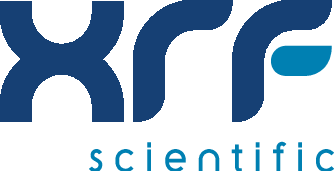Sustainable Mining: Minimizing Impact Through Efficient XRF Analysis
The transition to cleaner energy technologies has placed unprecedented demand on minerals like lithium, copper, and rare earth elements. But as the pressure to supply these materials intensifies, so does the expectation that extraction will be done responsibly. Sustainable mining aims to minimize environmental disruption while meeting production goals. Achieving that balance requires more than strong policy. It depends on precision. Efficient XRF analysis offers the clarity and speed mining operations need to work more intelligently. From pinpointing deposits to refining processes and monitoring impact, this approach allows teams to operate with greater care, control, and confidence across the entire mining lifecycle.
Using Less, Knowing More
Reducing impact starts with knowing exactly where to dig. Through rapid elemental identification in field conditions, efficient XRF analysis allows geologists to locate high-grade mineral deposits without unnecessary overburden removal. Targeted extraction preserves natural landscapes and also cuts down on equipment use, transport fuel, and site remediation costs. The resulting benefits include reduced operational footprints, more streamlined logistics, and the improved allocation of energy and materials.
More Informed Processing
Refining ore is one of the most energy-intensive stages in mining, but it doesn’t have to be wasteful. Real-time insights into ore composition, delivered through XRF analysis, allow operators to tailor processing parameters to the specific characteristics of each batch. Such a method helps reduce the use of reagents, improve temperature control, and enhance the efficiency of mineral separation while maintaining high quality throughout the process.
Tailings with Value
Mining waste, particularly tailings, has long been viewed as an operational burden. Using XRF technology, companies can improve the analysis of these materials and identify residual metals that were once too costly or complex to recover. Unlocking this secondary value helps reduce the need for new extraction while shrinking the environmental risks posed by long-term storage. As a result, tailings management evolves from a liability into a strategic advantage for both sustainability and profitability.
Low-Impact Exploration
Finding mineral-rich zones has historically required broad-scale drilling and sampling, both of which can be disruptive. Portable XRF tools now offer a more focused approach, enabling rapid, in-field screening of rocks and soils. Instead of disturbing wide swaths of land, exploration teams can move directly to the most promising areas. This method streamlines operations and supports environmental protection by minimizing the physical and ecological impact of early-stage prospecting.
Proactive Environmental Monitoring
Safeguarding ecosystems means staying alert to changes around the site. With the ability to detect trace metals in soil, water, and airborne dust, efficient XRF systems allow for frequent, on-site environmental assessments. Quick feedback loops help teams act before issues escalate, while supporting compliance with regulatory standards. These efforts strengthen trust with local communities and demonstrate a tangible commitment to long-term environmental stewardship.
Sustainable Resource Use
The routine evaluation of byproducts such as slags, tailings, and stockpiles enables operators to reclaim additional value from existing materials. Incorporating XRF analysis into this process supports a more circular approach, reducing dependence on virgin ore. When every output is treated as a potential input, resource consumption becomes more deliberate, and material efficiency rises across the operation.
Enabling Smarter Compliance
Efficient XRF analysis contributes to sustainable mining not only through operational improvements but also by supporting environmental accountability. Rapid, site-specific data collection helps track elements like lead, arsenic, and mercury in surrounding ecosystems. Immediate access to results allows mining teams to adjust activity before thresholds are exceeded. This approach strengthens environmental compliance while improving transparency in stakeholder communication. Instead of depending solely on periodic lab tests, operators can access reliable insights that guide more responsible site management.
Where XRF Scientific Comes In
XRF Scientific supports sustainable mining through advanced sample preparation and analysis solutions designed for efficiency, accuracy, and minimal environmental impact. Our offerings include:
- Fusion Machines and Reagents: Producing precise, homogenous samples for reliable XRF analysis
- Sample Preparation Tools: Processing materials efficiently with high-throughput crushers and mills to reduce waste and ensure consistency
- Reusable Platinum Labware: Supporting sustainable operations with durable, long-life crucibles and molds that minimize consumable use
- Automation and IoT Integration: Delivering real-time data insights to improve decision-making speed and accuracy
Each of these technologies empowers mining professionals to operate more sustainably without compromising performance or precision.
A Practical Path Forward
XRF analysis provides the efficiency needed to make sustainable mining more achievable. It delivers accurate data at speed, enabling operators to target materials with greater precision, reduce waste in processing, and respond effectively to environmental conditions. These capabilities contribute to meaningful improvements that help mining operations remain consistent, transparent, and environmentally aware over time. Together, the strengths of XRF analysis make it a dependable tool for supporting sustainable practices in everyday mining operations.




